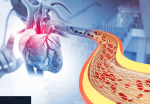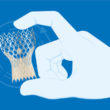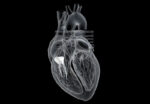Prior registries have shown that 65% of patients with chronic coronary syndrome (CSS) and angina do not present obstructive atherosclerosis. This phenomenon, called myocardial ischemia with no obstructive coronary arteries (INOCA) is more common in women and has been associated with high hospitalization costs and diminished quality of life. INOCA patients can present microvascular dysfunction...
Events in CAD Patients Who Refused or Were Ineligible for CABG
When deciding on the optimal coronary artery revascularization treatment of coronary artery disease (CAD) patients, physicians normally assessed clinical presentation, surgical risk, survival expectation, and the likelihood of a better quality of life. Decisions are made after careful consideration, by the Heart Team, who will ponder options such as coronary artery bypass graft (CABG), percutaneous...
Aortic Stenosis Progression Evolution
Aortic stenosis is an increasingly common valvulopathy because people are living longer now. A present, the main treatment consists of surgical (SAVR) or transcatheter aortic valve replacement. (TAVR). One of the main challenges of this disease is its progression. The European guidelines recommend Doppler echocardiograms every 2 to 3 years for mild cases, mildly calcified,...
Catheter-Based Therapy for Pulmonary Embolism: Lower Mortality and Rehospitalization?
Venous thromboembolism represents one of the main causes of cardiovascular death. Pulmonary embolism (PE) can vary from asymptomatic to manifesting with shock and sudden death, with a wide clinical spectrum. Patient followup is crucial, seeing as survival PE patients usually experience residual symptoms at long term, such as dyspnea or functional capacity deterioration. For decades,...
12-Month Evolution of Edge-to-Edge Repair with PASCAL
Mitral regurgitation (MR) is the most frequent valve disease. Mitral transcatheter edge-to-edge repair (M-TEER) has been shown beneficial in high or prohibitive risk patients in cases of degenerative and functional MR. The PASCAL device has been shown safe and effective by the CLASP II, but we still need further research in clinical “real world” environments. ...
ACC 2024 | RELIEVE-HF
Heart failure is characterized by increased left atrial filling pressure and venous congestion which intensify with exercise and volume burden, and makes conventional medical management hard. In this context, interatrial shunting might offer a self-regulating mechanism, as shown by the Ventura IAS study. The aim of this study was to assess the safety and efficacy...
TAVR in the Different Types of Aortic Stenosis
Aortic stenosis (AS) is classified according to gradient into high flow and high gradient (D1), low flow-low gradient with reduced ejection fraction (D2), and paradoxical low flow-low gradient with conserved ejection fraction (D3). D3 AS is characterized by ≥50% ejection fraction, but with systolic volume index ≤35 ml/min. Post TAVR evolution of D2 and D3...
Tricuspid Valve Transcatheter Edge-to-Edge Repair in the “Real World”
Tricuspid valve transcatheter edge-to-edge repair (T-TEER) is currently under development, with an increasing number of conducted procedures. While the TRILUMINATE Study did not reveal benefit regarding major events, it did show improvements in quality of life. In the real world, we encounter numerous patients who do not meet the study criteria but still experience symptoms...
TricValve: 12-Month Evolution
Tricuspid regurgitation has become increasingly common, and current pharmacological treatment options are limited. In turn, surgery, which is a complex alternative, carries considerable rates of complications and mortality. In response to this issue, various percutaneous systems are being developed, such as edge-to-edge treatment, percutaneous annuloplasty, and caval valve implantation (CAVI), among others. In the analysis...
Health Status Scores after Transcatheter Repair in Patients with Tricuspid Regurgitation: TRILUMINATE Analysis
Severe tricuspid regurgitation (TR) has been associated with higher mortality and significant limitations to patient quality of life, with considerable rates of hospitalization for cardiac failure (CF). Transcatheter edge-to-edge repair (TEER) with TriClip has been shown effective to reduce symptoms, with low risk of periprocedural complications. The aim of this study was to assess functional...









